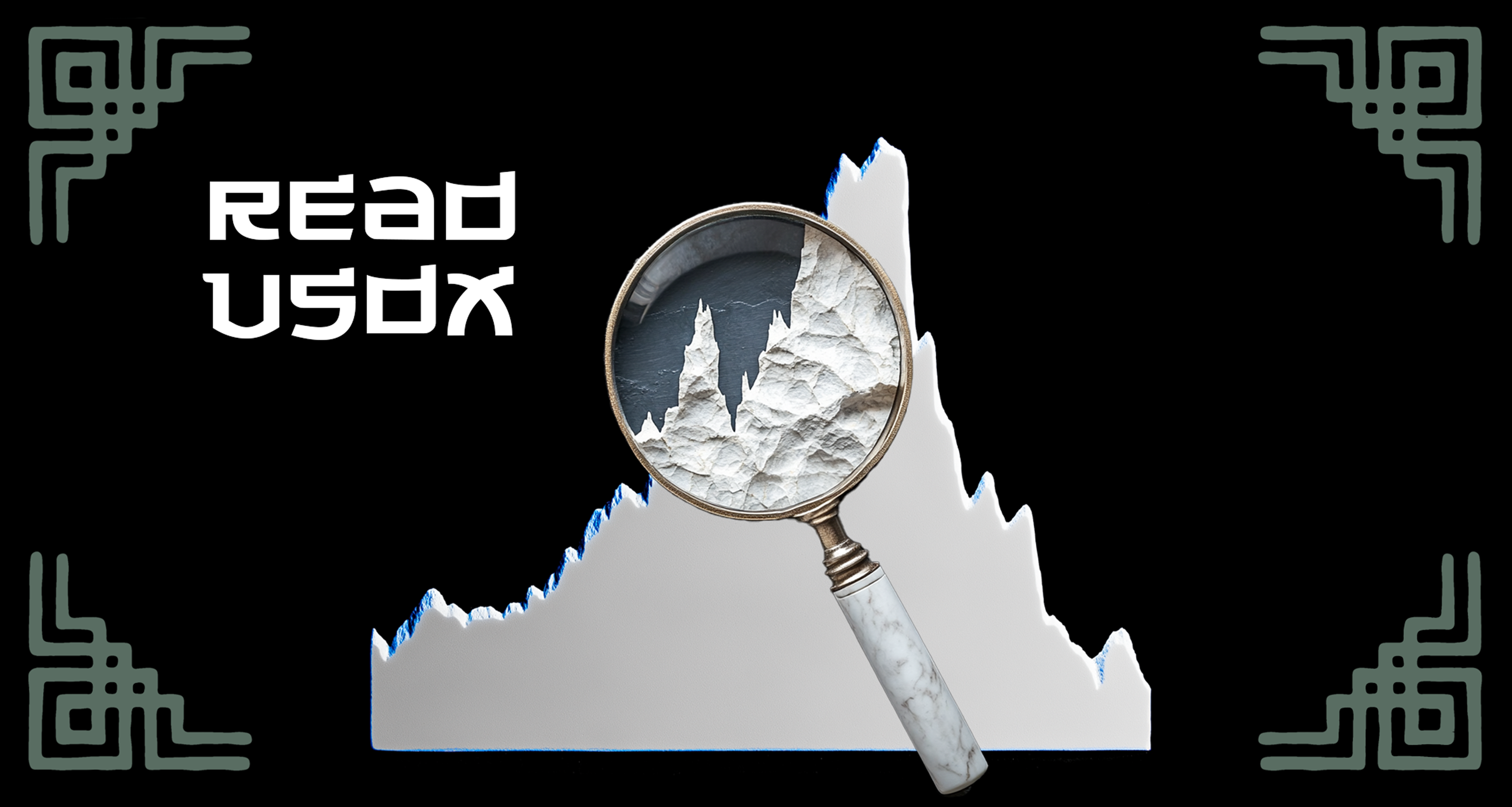Learn Trading for Free and Without Registration
An Online Glossary to Study Trading Independently
How to Read the Dollar Index and What It Can Indicate?
How to Read the US Dollar Index (USDX) and Use It Across Different Markets

The US Dollar Index (USDX) is a critical tool that reflects the strength of the US dollar against a basket of six major global currencies. Knowing how to read and interpret USDX can help traders and investors make informed decisions in the Forex, stock, commodity, and cryptocurrency markets.
How to Read the US Dollar Index
The USDX is measured in points and updated in real time. Its movements depend on the strength or weakness of the US dollar relative to the following currencies:
- Euro (EUR): 57.6%
- Japanese Yen (JPY): 13.6%
- British Pound (GBP): 11.9%
- Canadian Dollar (CAD): 9.1%
- Swedish Krona (SEK): 4.2%
- Swiss Franc (CHF): 3.6%
Key Points for Understanding USDX:
- Index Increase: Indicates dollar strengthening, meaning the dollar becomes more valuable relative to the currencies in the basket.
- Index Decrease: Indicates dollar weakening, making it less attractive.
- Base Value: The USDX started at 100 points in March 1973. If the index is above 100, the dollar is stronger than its average value during the base period. If below, it is weaker.
How to Use the Dollar Index Across Different Markets
1. Forex Market
In Forex trading, the USDX is used to analyze currency pairs where the US dollar is either the base or quote currency.
-
For Dollar Pairs:
- If the USDX rises, pairs with the dollar as the base currency (e.g., USD/JPY, USD/CAD) may also increase.
- For pairs where the dollar is the quote currency (e.g., EUR/USD, GBP/USD), a rising index could lead to lower prices.
-
For Correlation Analysis:
The USDX has an inverse correlation with pairs where the euro is the base currency, such as EUR/USD, due to the euro’s significant weight in the index.
How to Use It:
- Compare the current USDX value with historical support and resistance levels to determine the dollar’s general trend.
- Combine USDX data with technical analysis of a currency pair for more informed decision-making.
2. Stock Market
On the stock market, the USDX affects companies whose earnings depend on international trade.
-
Strong Dollar:
- Increases the cost of US goods abroad, which may negatively impact exporters like automotive or agricultural producers.
- Benefits importers by making foreign goods cheaper.
-
Weak Dollar:
- Supports exporters by lowering the cost of US goods internationally.
- Increases import costs, potentially impacting companies reliant on foreign supplies.
How to Use It:
- Analyze USDX to evaluate the impact on sectors reliant on exports and imports.
- Use the index to forecast earnings dynamics for companies operating in global markets.
3. Commodity Market
On the commodity market, the USDX often has an inverse correlation with prices of key commodities like gold, oil, and agricultural products.
- Strong Dollar:
- Leads to lower commodity prices, as they are denominated in dollars, making them more expensive for holders of other currencies.
- Weak Dollar:
- Pushes commodity prices higher, making them more accessible in international markets.
How to Use It:
- Use USDX to predict prices for gold, oil, and other commodities. For example, a falling USDX may signal an opportunity to buy gold as its price is likely to rise.
- Combine index analysis with technical indicators like Fibonacci levels or trendlines.
4. Cryptocurrency Market
While the cryptocurrency market is less formally tied to the USDX, the index still influences price dynamics for crypto assets.
- Weak Dollar:
- May increase the appeal of cryptocurrencies like Bitcoin (BTC), as investors seek alternative stores of value.
- Strong Dollar:
- Reduces demand for cryptocurrencies, as the dollar becomes a more attractive safe-haven asset.
How to Use It:
- Track USDX changes to assess investor interest in cryptocurrencies.
- Use the index as part of a comprehensive analysis of market conditions, including sentiment and liquidity data.
Conclusion
The US Dollar Index is a versatile tool, invaluable for analyzing and forecasting movements in various financial markets. It helps traders and investors evaluate the strength of the dollar and its impact on currency pairs, stocks, commodities, and cryptocurrencies.
At Ronin Academy, we teach how to effectively use USDX in combination with technical and fundamental analysis to develop a balanced trading strategy. Remember, understanding the bigger picture and interpreting the dollar index correctly will enable you to make more informed decisions and achieve success across multiple markets.


